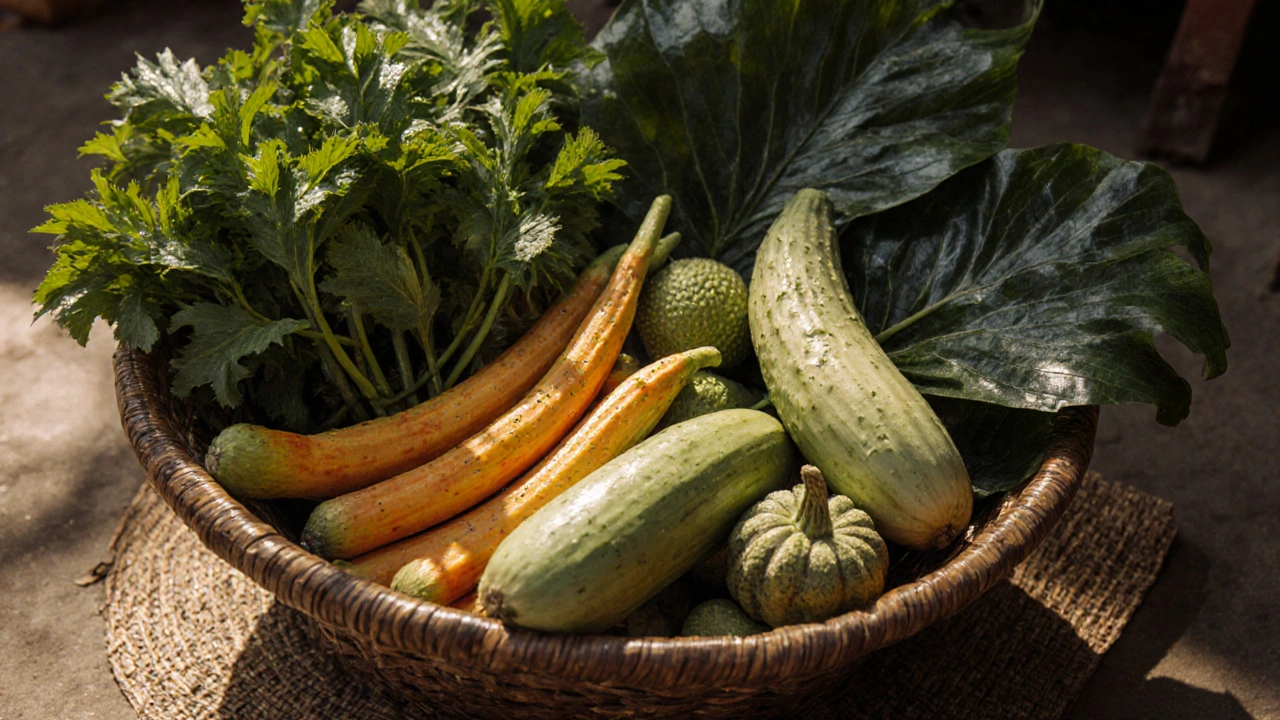Discover India's native vegetables, why they matter, and how to grow them. Get climate tips, a handy comparison table, and step‑by‑step planting guidance.
Indian Native Vegetable: Best Choices, Growing Tips, and Why They Matter
When we talk about Indian native vegetable, a plant species that has evolved naturally in India’s diverse ecosystems and has been cultivated by local communities for generations. Also known as traditional Indian crops, these vegetables are adapted to monsoon rains, high heat, and poor soils—no fancy inputs needed. Unlike imported hybrids that demand chemical fertilizers and constant watering, native vegetables like brinjal, a staple in Indian kitchens and often called the king of vegetables, amaranth, a leafy green rich in iron and drought-tolerant, and cluster beans, a hardy legume used for both food and soil improvement don’t just survive—they thrive with minimal care.
Why does this matter? Because Indian native vegetables are part of a bigger system: they support local biodiversity, reduce farming costs, and pack more nutrients than many commercial varieties. Studies from the Indian Council of Agricultural Research show these crops have higher levels of antioxidants, vitamins, and minerals. They also need less water, resist local pests naturally, and can grow in small spaces—perfect for balcony gardens or backyard plots. If you’re tired of buying expensive, imported veggies that wilt in a week, switching to native ones cuts your grocery bill and your carbon footprint. These plants don’t just feed you—they connect you to generations of farmers who knew how to work with the land, not against it.
What you’ll find in this collection are real, practical guides on how to grow, save seeds from, and cook with these forgotten crops. You’ll learn why brinjal is called the king of vegetables, how to use cluster beans to naturally enrich your soil, and which native greens can survive even the harshest summer heat. There’s no fluff here—just proven methods used by small-scale farmers across Tamil Nadu, Bihar, and Maharashtra. Whether you’re growing in a pot on your terrace or a plot in the countryside, these native vegetables are your best bet for a healthy, low-maintenance, and truly Indian garden.
